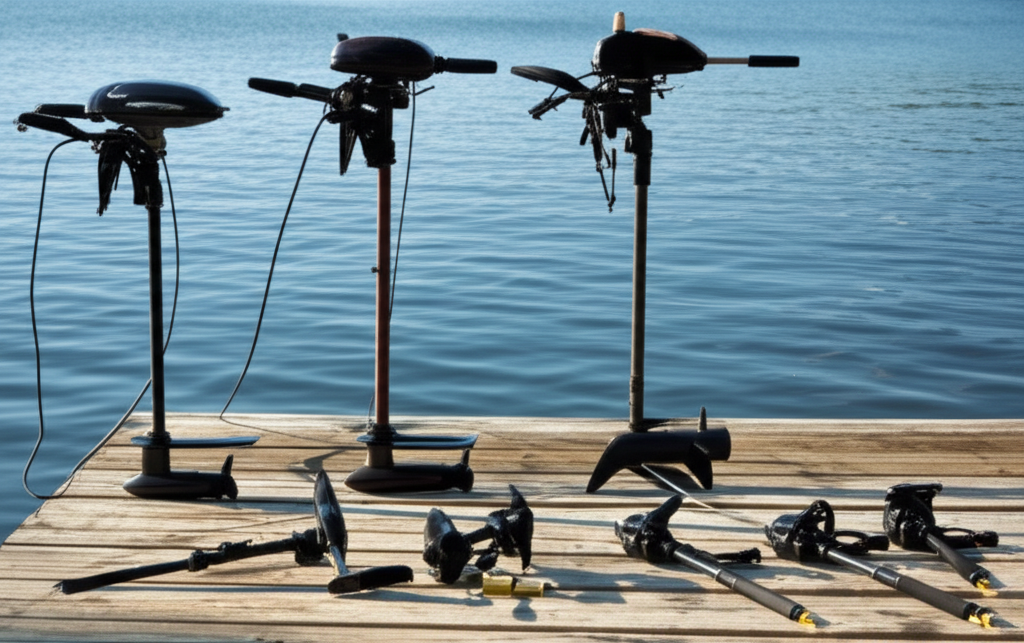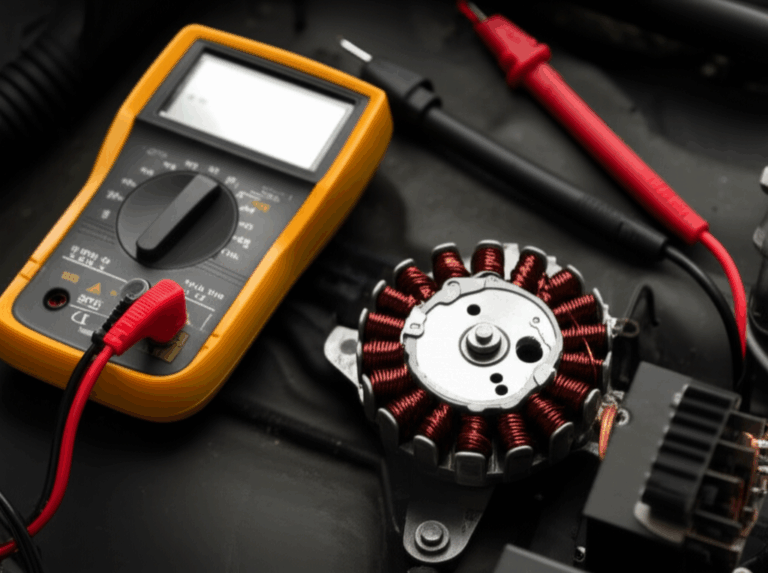
The Ultimate Guide: How to Choose the Right Size Trolling Motor for Your Boat (Thrust, Shaft, Voltage) — An Engineering Deep Dive Into What Really Drives Performance
Every design engineer and procurement manager knows the pain. You size a trolling motor by thrust and shaft length. You pick a voltage to match runtime. It works on paper. Then wind picks up. Current runs. Spot-Lock hunts. Battery voltage sags. Suddenly the “right” motor feels wrong. If you’ve felt that mismatch between spec sheets and real water, you’re in the right place.
Here’s the crux. You don’t just size a trolling motor by boat length or a simple thrust rule. You size it for the full system: hull, weight, wind, current, fishing style, shaft geometry, voltage, batteries, wiring… and the motor core itself. Lamination material, thickness, and manufacturing choices inside the stator and rotor dictate how efficiently a motor turns watts into thrust. Which dictates how long you hold that dock line, how well Anchor Mode holds your bow in a crosswind, and whether your runtime estimate holds up after lunch.
We’ll walk you through the practical “trolling motor thrust guide” you came for. Then we’ll make the physics simple. No hand waving. No vendor bias. Just clear, actionable engineering guidance you can use to size a system that fits your boat and your budget.
In This Article
- Why Correct Trolling Motor Sizing Matters
- The Engineering Fundamentals: Thrust, Shaft, Voltage, and Core Losses
- How Motor Laminations Influence Trolling Motor Performance
- Step-by-Step Calculation: Determine Your Trolling Motor Needs
- Boat-Type Recommendations With Engineering Rationale
- Battery, Power, and Runtime Planning
- Features, Controls, and Their Impact on Size
- Manufacturing and Quality Signals to Look for
- Common Mistakes to Avoid
- FAQs
- Two Short Case Studies
- Your Engineering Takeaway
Why Correct Trolling Motor Sizing Matters
You’ve heard the myth. Bigger is always better. It isn’t. Oversize a motor and you add weight, cost, battery count, wiring complexity, and sometimes noise. Undersize it and you fight your boat all day. The right size protects battery life, improves control, and keeps your propeller efficient in real conditions.
What changes the size you need:
- Boat weight and hull form. Deep V hulls need more thrust than flat-bottom jon boats because they sit higher and present more windage.
- Water conditions. Wind, current, and chop chew through thrust.
- Fishing style. If you rely on Spot-Lock, Anchor Mode, AutoPilot, or GPS-controlled hold in rivers or open water, you need headroom. Your “minimum” thrust won’t cut it in gusts.
- Voltage and batteries. 12V motors remain simple and light. 24V and 36V systems deliver higher thrust and better efficiency at a cost in batteries and cabling.
- Motor design. The efficiency of the motor itself, driven by its electrical steel, lamination thickness, and core assembly, determines how much electrical power becomes useful thrust. More on that in a minute.
Bottom line. The right choice balances thrust, shaft length, voltage, and motor efficiency. You’ll go longer on a charge. You’ll control your boat in nasty crosswinds. You’ll save money you can put into sonar, a quick release bracket, or a lithium battery upgrade later.
The Engineering Fundamentals: Thrust, Shaft, Voltage, and Core Losses
Let’s translate the buzzwords into a clear sizing process.
Thrust: The force that moves your boat
- Rule of thumb. Start with 2 pounds of thrust for every 100 pounds of fully loaded boat weight. That includes boat dry weight, outboard engine, fuel, gear, and passengers. Then add margin for wind, current, and weeds.
- Quick length reference. Some folks use 5 pounds of thrust per foot of boat length as a quick check. It works for light boats in calm water, yet weight tells the truth more reliably.
- Conditions matter. Wind and current increase effective load dramatically. Choppy water demands more thrust because the motor must accelerate and correct more often. Heavy weed beds increase drag on your propeller as well.
Shaft length: Put the prop where it belongs
- Goal. Keep the propeller 12 inches below the surface in all operating conditions. You avoid prop ventilation, maintain thrust, and keep the motor quiet.
- Bow mount measure. Measure from the bow mounting surface to the waterline at rest. Add 20 to 24 inches for headroom in chop and to submerge the prop. Deep V hulls and high decks often need 60 to 72 inch shafts.
- Transom mount measure. Measure from the top of the transom to the waterline. Add 10 to 12 inches for submergence. Transom shafts often fall between 30 and 42 inches.
- Waves and deck height. If you operate in big waves or carry heavy decks, err on the longer side. A composite shaft flexes and survives bumps. Too short and you’ll cavitate when the bow lifts.
Voltage: 12V, 24V, or 36V
- Voltage tiers. Up to 55 lb thrust usually means 12V. 55 to 80 lb thrust usually means 24V. 80+ lb thrust often means 36V. You’ll match thrust and voltage because the highest thrust models need higher system voltage to avoid impractical current draw.
- Batteries and runtime. 12V systems are simple. 24V and 36V add batteries and weight yet deliver better efficiency and longer runtime at equal thrust. You also drop current for the same power which reduces cable losses.
- Circuit protection. Size a circuit breaker per manufacturer recommendations. High-thrust motors can draw 50 to 60 amps or more at full speed. Use correct wire gauge for your run length to avoid voltage drop.
Core losses: Why laminations inside the motor matter
- Eddy currents are little electrical whirlpools that form inside a solid metal core when the magnetic field changes. They waste energy as heat.
- Hysteresis loss happens because the material resists being magnetized and demagnetized every cycle. It’s like bending a paper clip back and forth until it gets hot.
- Laminations stop the big whirlpools. Thin, insulated sheets of electrical steel break those eddy currents into tiny loops. Less loop area. Less heat. More torque per amp. More run time per battery charge.
- Thickness matters. Thinner laminations cut eddy currents. They help most as electrical frequency rises, which it does as rpm rises or pole count increases.
- Material matters. High quality non-oriented electrical steel with the right silicon content offers high permeability and low loss. That improves efficiency over the full rpm range.
Hold this mental model. The less your core heats, the more of your input power becomes thrust. You buy less battery. You carry less weight. You fish longer.
How Motor Laminations Influence Trolling Motor Performance
Now the part most guides skip. The motor inside your trolling system doesn’t all behave the same. The stack of steel laminations that form the stator and rotor set the ceiling for efficiency, torque density, and thermal behavior.
Material considerations
- Non-oriented electrical steels (often categorized as M grades) serve most traction and BLDC trolling applications. They deliver balanced magnetic properties in all directions. You see typical thicknesses like 0.50 mm, 0.35 mm, and thinner for high performance.
- Silicon content boosts electrical resistivity and reduces hysteresis loss. It increases permeability which helps magnetic flux pass through the core easily. Think of permeability like how easily a sponge lets water soak through it.
- Coatings on laminations provide interlaminar insulation. This stops inter-sheet eddy currents and improves stack factor. Quality coatings protect against rust. Some classes handle the elevated temperatures common in sealed motor pods.
Which materials show up where:
- Motor cores. Motors typically use non-oriented electrical steel. It supports changing magnetic fields and multi-directional flux paths in stators and rotors.
- Transformers. Grain-oriented steels shine in transformers that run with fixed flux direction. They offer very low core loss along the rolling direction. Great for transformers. Not for motors with rotating fields.
If you want a deeper dive into material types and how they impact loss and magnetization behavior across frequencies, here’s a resource on electrical steel laminations.
Lamination thickness
- Thicker sheets (0.50 mm) reduce cost and speed up stamping. They work well for low to moderate frequencies and budget-conscious builds.
- Thinner sheets (0.35 mm and below) cut eddy current loss. They become valuable at higher electrical frequencies. For a BLDC trolling motor, electrical frequency scales with rpm and number of pole pairs. Double the speed and you roughly double frequency.
- Trade-offs. Thinner costs more and requires tighter burr control. For high-end motors that carry Spot-Lock in gusts, that efficiency gain can pay back through extended battery life and cooler operation.
Stator and rotor design
- The stator core takes the windings. Its teeth and yoke shape define magnetic paths and slot fill. Low loss and high saturation flux density help torque density.
- The rotor core complements the stator. In BLDC designs with permanent magnets, the rotor lamination stack shapes the air-gap flux and contributes to mechanical stability.
- Slot/pole combination influences torque ripple and acoustic noise. You want smooth thrust at slow speed for stealth. Clever tooth geometry, skewing, or fractional slot configurations help.
You can explore typical stator options here: stator core lamination. For the rotating half of the equation, review rotor core lamination. If you need a broad overview, this page summarizes common motor core laminations.
Manufacturing and assembly processes
- Stamping. The workhorse for volume. Lowest unit cost at scale. Requires good tool maintenance to control burr height which affects interlaminar shorts and efficiency.
- Laser cutting. Ideal for prototyping or low-volume runs with complex shapes. It introduces a heat-affected zone. Proper stress relief or coating selection mitigates magnetic degradation.
- Bonding and interlocking. Mechanical interlocks work like LEGO bricks to hold stacks without welding. Bonded stacks improve rigidity and reduce vibration. Both methods avoid heat input that can hurt magnetic properties.
- Welding. Strong yet risky if heat penetrates too far. It can increase local loss. Use sparingly and with processes that limit heat into the magnetic path.
Environmental considerations for saltwater
- Sealed housings, robust coatings, and composite shafts fight corrosion. Saltwater trolling motor considerations include stainless fasteners, sealed connectors, and anti-corrosion materials around the lamination stack and magnets.
The takeaway. High quality laminations and smart assembly reduce core loss. The motor runs cooler at a given thrust. Your runtime improves. The motor holds Spot-Lock better in gusty crosswinds because torque per amp stays high when you need it most.
Step-by-Step Calculation: Determine Your Trolling Motor Needs
Let’s size your system from the boat up. Use this repeatable path whether you run a kayak on sheltered water or a 22 ft pontoon on a windy lake.
Step 1: Calculate your loaded boat weight
- Start with boat dry weight.
- Add outboard engine weight.
- Add fuel. Gas weighs about 6 pounds per gallon.
- Add gear: batteries, anchor, coolers, tackle, Power-Pole anchors if you have them.
- Add passengers. Be honest. This number drives everything.
Step 2: Determine minimum thrust
- Apply the baseline. Two pounds of thrust for every 100 pounds of fully loaded boat weight.
- Add margin for conditions. Add 5 to 10 pounds of thrust for wind and current. Go higher if you fish rivers or open water.
- Add margin for fishing style. If you rely on Spot-Lock, Anchor Mode, GPS-controlled holds, or open water trolling, add another 10 to 20 pounds. Anchor Mode thrust requirements spike in gusts as the motor fights drift.
- Check length as a sanity check. For quick reference, up to 14 ft boats land in the 30 to 45 lb range. 14 to 16 ft runs 45 to 55 lb. 16 to 18 ft runs 55 to 70 lb. 18 to 20 ft runs 70 to 80 lb. 20 to 22 ft runs 80 to 100 lb. 22 ft and up often need 100+ lb.
Step 3: Measure for ideal shaft length
- Bow mount. Measure from bow mounting surface to waterline. Add 20 to 24 inches. High deck height and choppy water push you to the longer end.
- Transom mount. Measure from transom top to waterline. Add 10 to 12 inches.
- Keep the prop about 12 inches below the surface during operation. Too shallow and you ventilate. Too deep and you risk hitting bottom in very shallow water.
Step 4: Match thrust and shaft to a voltage system
- 12V: Up to 55 lb. One battery. Light and simple. Great for kayaks, small jon boats, and short run days.
- 24V: 55 to 80 lb. Two batteries. Better efficiency and runtime for medium to larger boats, or windy lakes.
- 36V: 80 lb and up. Three batteries. Maximum power for heavy boats, strong currents, and long days with GPS features active.
What about runtime
- Trolling motor amp draw scales with speed and thrust. A 55 lb motor can draw 50 to 60 amps at full blast. It may sip 10 to 15 amps at mid speeds.
- Deep cycle lead-acid batteries should not discharge below about 50 percent if you want long life. A 100 Ah battery gives you about 50 Ah usable.
- Lithium (LiFePO4) gives you 80 to 100 percent usable capacity depending on BMS settings. It weighs less. It holds voltage longer under load. Runtime improves and the boat trims better.
Example runtime math
- If your average draw is 20 amps and you carry a 100 Ah lithium battery, you can expect around 4 to 5 hours before you reach 80 percent depth of discharge. Real water varies. Wind, waves, and weed beds push consumption up.
Boat-Type Recommendations With Engineering Rationale
Bass boats
- Typical size. 18 to 21 ft fiberglass bass boats need 70 to 100+ lb thrust. Many anglers settle on 24V or 36V systems.
- Shaft length. Often 50 to 60 inches for modern decks. Deep V style front decks might reach 60 inches or more.
- Features. Spot-Lock, i-Pilot, AutoPilot, and GPS controlled trolling shine on big lakes. Cable steer vs electric steer is a preference call. Electric steer pairs well with advanced features.
- Brands. You’ll see Minn Kota, MotorGuide, Lowrance Ghost, and Garmin Force in this space. They all control fish quietly when sized right.
Pontoons
- Typical size. 20 to 24 ft pontoons with full crew and gear often need 80 to 112 lb thrust. Many run 36V.
- Shaft length. Pontoons sit high. Bow mounts often need 60 to 72 inch shafts to keep the prop down in chop.
- Mount. Bow mount gives better control than a transom mount. It pulls the boat rather than push from behind.
Jon boats and aluminum skiffs
- Typical size. Light 14 to 16 ft boats run 45 to 55 lb on 12V. Heavier builds or windy lakes push toward 70 lb on 24V.
- Mount. Bow mounts allow precision around docks and laydowns. Transom mounts handle simple maneuvering for duck blinds or creek hopping.
Kayaks and small canoes
- Typical size. 30 to 55 lb thrust on 12V does the job. Weight matters. A 55 lb unit pairs well with a lithium battery for long runtime without a backache.
- Shaft length. Shorter shafts keep the prop where you want it. Avoid too long or you’ll plow bottom in skinny water.
- Brands. Newport Vessels, Haswing, Watersnake, and others offer kayak-focused packages.
Deep V hulls and bay boats
- Typical size. Higher bows need longer shafts and more thrust to fight windage. 80 to 112 lb on 24V or 36V becomes common.
- Saltwater. Use saltwater-rated motors for corrosion resistance. Look for sealed connectors, stainless fasteners, and robust coatings. Rhodan Marine built a strong following in offshore and coastal applications.
Inflatable, aluminum, fiberglass, and hull specifics
- Inflatable boats need careful mounting plates and reinforced transoms. Lower thrust can still move them well because they weigh less.
- Aluminum boats run lighter than fiberglass hulls. They need less thrust at the same length if deck height matches.
- Fiberglass deep V boats fight more windage. They often demand longer shafts and higher thrust.
Battery, Power, and Runtime Planning
Pick the battery chemistry
- Deep cycle lead-acid. Affordable. Heavy. About 50 percent usable capacity if you want long life. Works with most chargers.
- AGM. Sealed lead-acid that handles vibration better than flooded. Still heavy.
- Lithium (LiFePO4). Light, high usable capacity, and stable voltage under load. High upfront cost. Superior life and performance if you fish hard.
Right-size your battery bank
- 12V system. One battery. Consider 100 Ah or more if you want full-day runtime.
- 24V system. Two 12V batteries in series. Choose capacity based on expected draw. Two 100 Ah in series delivers 24V at 100 Ah.
- 36V system. Three in series. Popular with 100+ lb thrust motors. Many anglers move to lithium here to save weight.
Charging and protection
- Use a smart onboard charger matched to your chemistry. Many chargers handle mixed banks that run both cranking batteries and trolling batteries.
- Install a circuit breaker sized per your motor spec. Protect your wiring and your investment.
- Keep cables short and sized correctly to limit voltage drop. Long power cable runs waste energy as heat.
Battery boxes and installation
- Rugged battery boxes help on small craft. You can use a Pelican Case style enclosure for a custom lithium setup if you maintain ventilation and follow manufacturer guidance. Secure it. Keep moisture out. Protect connections.
Runtime expectations
- Digital Maximizer style controls use PWM speed control to cut wasted heat at partial speeds. You go farther per amp-hour than with simple stepped resistive control.
- Propeller efficiency matters too. A weedless wedge prop handles vegetation with minimal load penalty compared to improvised hacks. Clean and balanced props waste less energy.
Features, Controls, and Their Impact on Size
Before you lock in thrust, consider the features you expect to run all day.
Mounting type
- Bow mount vs transom mount. Bow mounts pull and give you precision. Transom mounts push and suit small boats or backup duty.
- Quick release bracket. It saves deck space and speeds removal. That matters for shared boats or storage.
Control type
- Cable steer vs electric steer. Cable steer feels direct and fast for dock work. Electric steer integrates with GPS features and remote control. Foot pedal, hand control, or remote control all have firm pros and cons.
Advanced features
- GPS and Spot-Lock. Plan extra thrust if you’ll hold position in wind and waves. Anchor Mode and AutoPilot use closed-loop control that likes overhead.
- Universal sonar and transducer integration. Check compatibility with your fish finder. Garmin, Lowrance, and Minn Kota ecosystems integrate differently.
- Stow and deploy. Lift assist and power steering features reduce strain during frequent moves. A composite shaft reduces corrosion concerns and survives impacts better than metal shafts.
Deck geometry and shaft
- Deck space and mounting plate placement set shaft angle and usable length. Don’t crowd the bow. Give the head room to rotate without hitting rails.
Manufacturing and Quality Signals to Look for
If you source motors or subcomponents, you care about the stack behind the sticker. The right questions protect your performance and your warranty exposure.
Electrical steel and laminations
- Ask for material specs and coating classes. Magnetic properties depend on grade and thickness. ASTM A677 covers common non-oriented electrical steel requirements. IEC 60404 lays out magnetic test methods. You don’t need to memorize them. You do want suppliers who know them cold.
- Check stack factor, burr limits, and insulation integrity. Poor burr control creates interlaminar shorts that increase core loss.
- Confirm process controls for stamping or laser cutting. Stress and heat input shift losses and can raise noise.
Core assembly
- Evaluate interlocking, bonding, and welding approaches. Interlocks avoid heat. Bonding increases rigidity. Poor welds can hurt magnetic properties and add rework.
- Validate stator slot liner and winding insulation. Slot liner quality impacts thermal endurance and dielectric safety.
- Review rotor balance and magnet retention. Vibration and torque ripple hurt stealth and shorten life.
Environmental protection
- Saltwater-rated hardware matters. So do potted electronics, sealed connectors, and composite shafts. Look for conformal coating on PCBs and potting for critical assemblies.
Warranty and support
- Ask for failure data on sealed motors that run Anchor Mode in heavy chop. It’s a brutal duty cycle.
- Review published thrust ratings, amp draw, and runtime curves with a critical eye. Vendors test in ideal conditions. You don’t fish in a lab.
Common Mistakes to Avoid
- Underestimating boat weight or ignoring environmental factors. You end up underpowered, and runtime suffers.
- Choosing an incorrect shaft length. Too short and the prop ventilates. Too long and you drag the prop in shallow water and fight deployment.
- Neglecting battery capacity and runtime. Fishing styles vary. Baseline your Amp-Hours with margin.
- Ignoring water type. Don’t run a freshwater motor in saltwater without corrosion protection. You’ll regret it.
- Overpowering a boat for bragging rights. Unnecessary weight and cost rarely help. Efficiency wins days and tournaments.
- Skipping proper circuit breakers and wire gauge. A blown breaker or melted cable ruins good weather.
FAQs
Can I use a 12V motor on a 24V system?
- No. A 12V motor wired to 24V can fail, and it voids warranties. Match motor voltage to battery voltage.
How much thrust do I need for a 14 ft aluminum boat?
- Most 14 ft aluminum boats run well on 45 to 55 lb thrust. Use weight to confirm. If you carry two anglers, a cooler, and a livewell, 55 lb gives you headroom.
What happens if my shaft is too short?
- The prop ventilates as the bow lifts. Thrust collapses. Noise rises. Control suffers in any chop.
How many batteries do I need for a 36V trolling motor?
- Three 12V batteries in series. Lead-acid or lithium. Match capacities and chemistries. Use a compatible charger.
Is more thrust always better?
- Not always. Extra thrust improves control in wind and current. It also adds weight and battery count. Balance matters. Oversize slightly for tough water, not wildly.
How fast does a 55 lb thrust motor go?
- Speed depends on hull, weight, and propeller. Most setups hit 3 to 5 mph on small boats. Trolling motors excel at control, not speed.
Does Spot-Lock or Anchor Mode change my thrust needs?
- Yes. Holding a position in gusty wind or current needs overhead. Add 10 to 20 lb of thrust beyond your weight-based minimum.
What do 12V, 24V, and 36V mean for motors?
- They define system voltage. Higher voltage lowers current for the same power. That improves efficiency and reduces heat and voltage drop along cables.
Do deck height and waterline affect shaft length?
- Absolutely. Measure from the mounting surface to the waterline. Then add margin for waves.
What about saltwater trolling motor considerations?
- Look for sealed electronics, stainless fasteners, corrosion-resistant coatings, and composite shafts. Rinse after use. Keep connectors clean and protected.
Two Short Case Studies
Case 1: The Bass Fisherman
- Boat: 18 ft fiberglass bass boat
- Fully loaded weight: 2,500 lb
- Conditions: Moderate wind and current. Frequent Spot-Lock use and GPS integration with sonar.
- Thrust math: 2,500 lb / 100 × 2 = 50 lb minimum. Add ~20 lb for wind and Spot-Lock = 70 lb target.
- Shaft length: Measure bow deck to waterline. If you have 50 inches, add 20 inches = 70 inch shaft. Many bass anglers land on 60 to 72 inches depending on deck height and waves.
- Decision: 70 to 80 lb thrust on 24V works. If you fish big, open water in strong winds, consider 36V for high-end control and runtime.
Case 2: The Pontoon Cruiser
- Boat: 22 ft pontoon
- Fully loaded weight: 3,500 lb
- Conditions: Lakes with occasional current. Slow maneuvering and holding along shorelines.
- Thrust math: 3,500 lb / 100 × 2 = 70 lb minimum. Add 10 lb for size and windage = 80 lb.
- Shaft length: Pontoons sit high. If you measure 30 inches from deck to waterline, add 30 inches = 60 inch minimum. 60 to 72 inches is common.
- Decision: 80 to 112 lb on 36V provides confident control for a full crew day.
Your Engineering Takeaway
- Start with loaded weight. Use 2 lb thrust per 100 lb as your floor. Add headroom for wind, current, and your fishing style.
- Match voltage to thrust. 12V fits small boats. 24V and 36V deliver control and runtime for big boats or tough water.
- Measure shaft length from mounting surface to waterline. Add 20 to 24 inches for bow mounts. Add 10 to 12 inches for transom mounts.
- Pick batteries for real runtime. Lithium saves weight and increases usable capacity. Deep cycle works if you watch depth of discharge.
- Look under the hood. High quality laminations, the right electrical steel, and tight manufacturing control increase motor efficiency. That means longer runtime and better thrust per amp.
- Round out the system. Circuit breakers, cable gauge, propeller choice, and mounts all affect performance and reliability.
Want a quick way to vet motor cores and stacks during sourcing or design? Review material grade, lamination thickness, coating class, and stacking method up front. Ask for core loss data across frequency. Confirm burr control and insulation integrity. These details turn into hours of extra runtime and rock-solid Spot-Lock when it counts.
If you’d like a deeper materials refresher with examples across stator and rotor stacks, take a look at stator core lamination, rotor core lamination, and an overview of motor core laminations. For material fundamentals and coating options, this guide to electrical steel laminations helps you frame trade-offs fast.
Design smart. Size the full system. Fish longer. And enjoy a motor that feels like it reads your mind when the wind kicks up.
— The Engineering Team
References and standards you can consult for deeper validation
- ASTM A677: Standard Specification for Nonoriented Electrical Steel.
- IEC 60404 series: Magnetic materials test methods.
- IEEE publications on motor core losses and lamination effects for rotating machinery.
Note: Brand names like Minn Kota, MotorGuide, Garmin Force, Lowrance Ghost, Newport Vessels, Haswing, Watersnake, Rhodan Marine, and Power-Pole appear here for context only. Always confirm model-specific thrust, shaft length, and amp draw in the latest official documentation.








